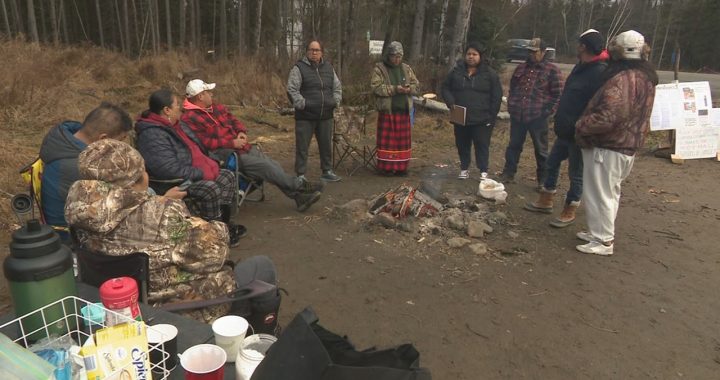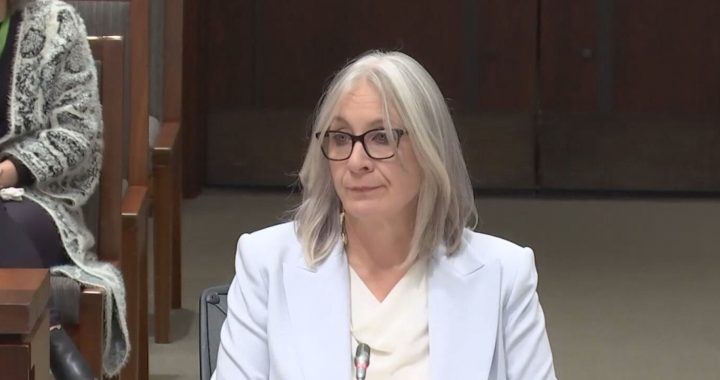Elder Mary Rose Naytowhow is part of a group of mental health and addictions treatment advocates from First Nations across Saskatchewan who says more needs to be done to tackle the opioid crisis in the province.
“We are losing them fast and we are quite concerned,” she tells APTN News. “As an elder, I too bring that message across, we need to work together, bring our communities together and have the surrounding neighbours and neighbouring bands to come together.”
Naytowhow met with colleagues in Prince Alberta to address this drug crisis.
Recent statistics from Saskatchewan’s coroner’s service say that there have been 364 suspected and confirmed drug related deaths so far in 2021 – in 2020 the total was 330.
Joel McIntyre is an alcohol and drug abuse worker in English River First Nation.
He says the community already has a problem with meth – and now opioids are now knocking at the door of his community.
“Because of Covid addictions went high, suicide thoughts are going high. We had just dealt with one recently, and now we’re dealing with drugs.”
Bryan Leblanc, founder of HOP, a youth outreach centre outside Prince Albert that hosts after-school programs such as art classes to other recreational activities.
Leblanc says young people need to connect with their culture.
“Giving them options and opportunities and letting them decide. It’s challenging and it’s getting worse,” he says. “It’s definitely, the challenges that, that occur and that they face every day, um man, yeah, it takes courage, it takes strength to stand there and turn things down and stuff.”
Opioid deaths doubled among First Nations people in Ontario amid pandemic: report
Saskatchewan is only the latest province to be hit by the opioid crisis.
British Columbia has been struggling for years, Alberta is seeing more overdose deaths and now a new report out of Ontario says the number of First Nations people who died from opioid-related deaths in the province has more than doubled during the first year of the COVID-19 pandemic.
That’s one of the key findings of a report released by the Chiefs of Ontario and the Ontario Drug Policy Research Network on Friday, which examined patterns in hospitalizations and deaths due to opioid-related poisoning among First Nations and non-First Nations people in Ontario.
It notes that 116 First Nations people died due to opioid poisoning between March 2020 and March 2021, compared with 50 people in the previous year.
That’s a 132 per cent increase, compared to a 68 per cent increase of opioid-related deaths among the rest of the population in the province.
“First Nations have been disproportionately affected by the overdose crisis,” said Ontario Regional Chief Glen Hare in a news release.
“The use of opioids and other substances continues to surge during the COVID-19 pandemic, producing conditions that further increase overdoses and deaths.”
The monthly rate of hospital visits for opioid-related poisoning has increased since March 2016 among both First Nations and non-First Nations people, the report notes.
The number of First Nations people who visited the hospital for opioid-related poisoning between March 2020 and March 2021 was 816, compared with 601 people in the previous year _ marking a 35.8 per cent increase.
In comparison, the number of non-First Nations people who visited the hospital for opioid-related poisoning increased 16.4 per cent during this period, from 7,441 to 8,662.
The report states the majority of First Nations people who visited the hospital or died due to opioid-related poisoning lived in urban areas or outside of First Nations communities.
However, during the pandemic, the largest relative increase in opioid-related harms occurred among First Nations people living in rural areas and within First Nations communities. Specifically, just over one in five hospital visits occurred among First Nations people living within First Nations communities between March 2020 and March 2021, compared to one in seven a year prior.
The report also notes that the involvement of fentanyl in opioid-related deaths significantly increased during the pandemic, contributing to 87 per cent of opioid-related deaths among First Nations people and aligning with broader trends across the province.
First Nations people were identified in the report using the Indian Registry System database, which includes people who are eligible for Indian Status under the Indian Act.
The Chiefs of Ontario and the Ontario Drug Policy Research Network also released a report analyzing opioid use, related harms, and access to treatment among First Nations in Ontario on Friday.
“The reports released today are very explicit in providing evidence that governments need to correct the underfunding that has been occurring for years to make effective progress on addressing the overdose crisis in First Nations communities,” said Hare.
The Truth and Reconciliation Commission’s calls to action urge the federal government to establish measurable goals to identify and close the gaps in health outcomes between Indigenous and non-Indigenous communities.
Hare said many First Nations communities have made “great efforts to strengthen community capacity through community-led programs.”
However, he said the work to implement the recommendations in these reports must expand in order for real progress to happen, to prevent future tragedies and strengthen the healing processes “so desperately needed” in First Nations communities.
“I look forward to meeting with all levels of government immediately to co-ordinate a long-term, First Nations-led strategy to address the opioid crisis affecting First Nations across Ontario,” Hare added.
Ontario’s Ministry of Health and Indigenous Services Canada did not immediately provide a comment.
With files from the Canadian Press









